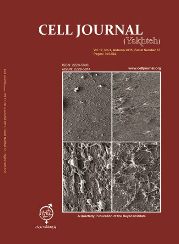[==English version below==
Continua la copertura mediatica della triste vicenda di Jenny Fry, una ragazzina di 15 anni che si è tolta la vita a causa della estrema sofferenza provocatale dalla Elettrosensibilità, e questo ci porta a fare una serie di considerazioni.
La Elettrosensibilità, soprattutto nelle sue forme più gravi, è una malattia terribile che allo stato attuale non viene riconosciuta come tale e conseguentemente i malati non ricevono alcuna forma di assistenza ed aiuto.
A questo si aggiunge l’ignoranza dei più, che non si fanno scrupolo di arrecare danni ai malati con i loro comportamenti scriteriati.
E così succede che i vicini di casa lascino i loro router accesi 24 ore su 24 irradiando, oltre che il proprio appartamento, anche quelli attigui; o che in una scuola non vengano prese precauzioni per consentire ad un allievo Elettrosensibile di poter continuare a frequentare le lezioni.
Ma una cosa che sfugge a tantissima (troppa) gente, è che tutto questo non riguarda solo gli Elettrosensibili.
Le emissioni Wireless, costituite da microonde, danneggiano l’organismo anche di chi non è in grado di percepirne gli effetti dannosi.
E allora, a voler esaminare bene la questione, si configurano diversi tipi di reato quando qualcuno (vedi i casi di cui sopra del vicino di casa e della scuola – ma gli esempi potrebbero essere ben più numerosi) espone qualcun altro a ciò che l’OMS (tramite la IARC, Agenzia Internazionale per la Ricerca sul Cancro) ha dichiarato essere un possibile cancerogeno per l’uomo (per la verità attualmente pure sottostimato nei suoi effetti dannosi).
Getto pericoloso di cose e lesioni personali con l’aggravante della reiterazione sono i primi che vengono alla mente.
Poi, nel caso degli Elettrosensibili, si configura pure il disturbo delle occupazioni o del riposo delle persone (Art. 659 c.p.).
Ma in questo strano mondo non sono i disturbatori ad essere allontanati o puniti, bensì gli Elettrosensibili a dover abbandonare le proprie abitazioni per smettere di stare male.
Voi direte, ad esempio nel caso dei vicini, “ma loro hanno il diritto di poter usare quegli strumenti”. Liberissimi di farlo, purché non invadano le altrui abitazioni!
Quando quelle emissioni varcano i muri perimetrali ed invadono massicciamente le abitazioni intorno, allora le cose non vanno più bene!
Si dice che la libertà di un individuo finisca dove inizia quella di un altro, ma in materia di Campi Elettromagnetici pare che si possa essere dei banditi e la prevaricazione regni sovrana.
Non sarebbe il momento di iniziare a regolamentare tutto questo?
Tornando alla Elettrosensibilità, non è in realtà solo una allergia, bensì una sindrome immuno-tossica che compromette diverse funzioni dell’organismo, portando nei casi gravi a livelli estremi di compromissione fisica.
Per rendere l’idea, immaginatevi di essere celiaci e di essere costretti ad ingoiare ogni giorno ingenti quantità di glutine.
Pensate che sareste in grado di sopravvivere a lungo?
E proprio questo si chiede agli Elettrosensibili: di esporsi ogni giorno a ciò che per loro è veleno.
Ma siccome a nessuno piace l’idea di soffrire ed infine morire, i malati di Elettrosensibilità sono costretti a rinunciare a tutte le loro attività, riducendosi spesso a vivere nell’isolamento più totale.
Senza un lavoro non si campa e comunque non è bello essere di peso ai propri familiari (sempre che li sia abbia!) nonché rinunciare a tutto ciò che la vita offre, così capita che qualcuno non regga al peso delle condizioni di vita cui è costretto e faccia la fine di Jenny Fry.
E’ accettabile che ciò avvenga, tra l’altro a causa di qualcosa che sta danneggiando la salute DI TUTTI?
La Elettrosensibilità è certamente una malattia scomoda e c’è tutto l’interesse a fare in modo che non venga riconosciuta.
Ammettere la sua esistenza significherebbe ammettere che i Campi Elettromagnetici in Alta Frequenza sono in grado di arrecare danni all’organismo e questo causerebbe un danno economico enorme a chi fa business con la tecnologia Wireless.
Ed è così che queste persone, grazie alle loro enormi possibilità economiche, fanno di tutto per frenare la presa di coscienza della popolazione riguardo ai rischi derivanti dall’uso estremo ed irragionevole di ogni sorta di gadget Wireless.
..E intanto c’è gente che continua ad ammalarsi, soffrire ed anche morire come Jenny Fry (quando non muore di cancro al cervello, leucemia o linfoma, ovviamente), mentre altra arricchisce i propri conti in banca.
Riposa in pace, Jenny Fry, sei nei nostri cuori.

[EN] – Thanks to Dave Ashton of the Facebook page “UK Electrosensitives” for his precious help.
The media coverage of the sad story of Jenny Fry, a 15 year old girl who took her own life because of the extreme suffering caused by EHS, is ongoing, and there are some important issues raised by this case.
EHS, especially in its most severe form, is a terrible disease that is generally not recognized as such, and consequently those who are affected do not get any form of assistance and help.
In addition to this, there is the ignorance of many people, who have no qualms about damaging EHS people with their obnoxious behavior.
As a result, neighbours leave their radiating Wi-Fi routers switched on 24/7, affecting not only their own homes, but also their neighbours’ homes; and in schools, no precautions are taken to allow Electrosensitive students to go on attending classes.
But a lot of people (too many) are missing the fact that this ever-present radiation doesn’t just affect EHS people.
Wireless emissions , consisting of radio and microwaves, also damage the bodies of those who are not able to perceive the damaging effects.
On examination, a crime is committed when someone (see the cases mentioned above about the neighbor and the school – but there are many other examples) exposes another person to what the the International Agency for Research on Cancer (IARC – part of WHO) has classified as a possible carcinogen to humans, though a number of scientists say that this classification actually underestimates the harmful effects.
The discharge of a dangerous toxin, and the personal injury aggravated by repeated exposure, come to mind.
Also, in the case of EHS people, the crime of disturbing their occupation or the rest of the people arises (Art. 659 of the penal Code: according to the Italian law).
But, in this weird world, it’s not the troublemakers who are held accountable and punished, but the EHS people, who sometimes have to flee from their homes in order to protect themselves.
You might say, regarding the neighbours, “but they have the right to use these technologies.” Yes, they are free to do so, as long as their radiation does not invade other people’s homes!
When these emissions cross the perimeter walls and penetrate the nearby homes, then things are very wrong!
It’s said that one person’s freedom ends where another’s begins, but it seems that in the matter of electromagnetic radiation, it is possible to be a criminal with impunity, and prevarication reigns supreme.
Isn’t it time to start regulating all of this?
Returning to EHS, it’s not just an allergy, but is an immuno-toxic syndrome compromising several body functions, and leading, in the most severe cases, to extreme levels of physical impairment.
As an example, imagine being celiac and being forced to swallow huge amounts of gluten every day.
Do you think you would be able to survive for long?
And this is what is asked of EHS people: to expose themselves every day to what is poisonous to them.
But since no one likes the idea of suffering and in the end dying, EHS sufferers are forced to give up all their activities, often being also forced to live in the most total social isolation.
It’s not possible to go on living without a job, and it is not nice being a burden to the family (if there is one!), or renouncing to what life has to offer, so some who cannot bear the weight of living in such a state end up the way Jenny Fry did.
Can we accept this happening, because of something that is damaging the health of EVERYONE?
EHS is certainly an inconvenient disease, and there are many interests ranged against it to prevent it from being recognised as real.
Admitting its existence would mean admitting that High Frequency Electromagnetic Fields can harm the body, and this would cause huge economic damage to those whose business is linked to wireless technology.
And so these people, thanks to their huge potential for profit, do anything they can to curb the awareness of the population about the risks related to the extreme and unreasonable use of any sorts of wireless gadgets.
… And in the meantime there are people who continue to fall ill, suffer and die as Jenny Fry did – if they don’t die of brain cancer, leukemia or lymphoma, of course – while the people who are linked to wireless technologies enrich their bank accounts.
Rest in peace, Jenny Fry, you’re in our hearts.]
Jenny Fry, 15, was found in woodland near her home in Chadlington
30 November, 2015 – “The Telegraph” (UK), by Lucy Clarke-Billings

A mother claims a Wi-Fi allergy killed her daughter and is accusing an Oxfordshire school of failing to safeguard children against the physical effects of wireless technology, an inquest has heard.
Jenny Fry, 15, was found in woodland near her home in Chadlington, on June 11 this year after texting a friend telling her she would not be going to school and intended to kill herself.
An inquest heard the teenager was intelligent and organised but that her life had been made a misery due to the prolonged effects of a condition known as electro-hypersensitivity (EHS).
"Wi-Fi and children do not mix. Much more research needs to be done into this because I believe that Wi-Fi killed my daughter,"
Mrs Fry, Jenny's mother
Mrs Fry told Oxfordshire Coroners’ Court that Jenny had started showing signs of EHS in November 2012 and that the closer she was to a wireless router, the worse she felt.
“Jenny was getting ill and so was I” said Mrs Fry. “I did some research and found how dangerous Wi-Fi could be so I had it taken out of the house.
“Both Jenny and I were fine at home but Jenny continued to be ill at school in certain areas.

“She was receiving lots of detentions, not for being disruptive in class or misbehaving, but often because she used to take herself out of the classroom to find another where she was able to work. She took her schoolwork seriously.
“I took lots of information into school to show the headteacher, Simon Duffy, but he said there was equally the same information available claiming Wi-Fi was safe.
“I also had a heated exchange with teachers telling them Jenny was allergic to Wi-Fi and that it made no sense making her take detentions in rooms that were making her ill.”
The World Health Organisation does not characterise EHS as a medical diagnosis but does recognise the symptoms.
• Grandmother spends £4,000 WiFi-proofing home
In a 2005 report, WHO concluded: “EHS is characterized by a variety of non-specific symptoms that differ from individual to individual. The symptoms are certainly real and can vary widely in their severity.
“Whatever its cause, EHS can be a disabling problem for the affected individual. EHS has no clear diagnostic criteria and there is no scientific basis to link EHS symptoms to EMF exposure.
“Further, EHS is not a medical diagnosis, nor is it clear that it represents a single medical problem.”
"I remember saying to the school 'if someone had a peanut allergy you wouldn't make them work surrounded by peanuts',"
Mrs Fry, Jenny's mother
The inquest also heard Jenny previously spoke of suicidal thoughts in November 2014 following the death of close friend Tom Boomer.
The family is now campaigning to raise awareness of EHS and how wireless technology can affect health. They hope to get the use of wireless technology in schools changed.
Mrs Fry said: “Jenny died after making a cry for help. She texted her friend saying she was intending to die but told her where she was.
“If she had intended to kill herself she wouldn’t have said where she was. Unfortunately the friend did not have her phone with her so never saw the message in time.
“Jenny left letters for us where she said she couldn’t cope with her allergies from wifi anymore.
“She left them for us in case things went too far but I don’t believe she wanted to die.
“She wanted to do well at school and go to university but she knew Wi-Fi was having a bad effect on her studies.
“It got to the stage where she would hide herself away in unused classrooms in the school to work just so she could escape the Wi-Fi.
“In the classroom she had a seating plan but if she was near where the router was she would suffer headaches and feel very hot and bothered.
“As soon as Jenny walked away from a router she felt instantly better so she was almost hunting out areas of the school which weren’t covered by Wi-Fi just to do her work.
“I remember saying to the school ‘if someone had a peanut allergy you wouldn’t make them work surrounded by peanuts’.
“Just because Wi-Fi is new and all around us doesn’t mean it is safe. Wi-Fi and children do not mix. Much more research needs to be done into this because I believe that Wi-Fi killed my daughter.”
Simon Duffy, headteacher of Chipping Norton School, said: “The safety of our students whilst they are in school is paramount and Jenny’s safety at school was just as important as anyone else’s.
“Just like many other public spaces, Chipping Norton School does have Wi-Fi installed to enable use to operate effectively.
“The governors are content that the installed equipment complies with the relevant regulations and will ensure this continues to be the case.”
Oxfordshire coroner Darren Salter recorded a narrative verdict but did not include the factors relating to EHS as he said there were no medical notes to prove Jenny did suffer from it.
Is EHS real?
‘Radiowave sickness’ was first named and described in 1932, with most of the early cases being discovered in military personnel.
In 2011, an American woman told of how she was forced to abandon her family farm in the state of Iowa and moved to Green Bank, West Virginia – a tiny village of 143 residents in the heart of the Allegheny Mountains.
Green Bank is part of the US Radio Quiet Zone, where wireless is banned across 13,000 sq miles (33,000 sq km) to prevent transmissions interfering with a number of radio telescopes in the area.
Diane Schou said the community enables her to escape symptoms such as red, itching skin, blurred vision and headaches.
However the condition is yet to be identified by official health bodies as a medical diagnosis. At present, there are no accepted research criteria other than ‘self-reported symptoms’, and for clinicians there is no case definition or clinical practice guideline.
Dr Jill Meara, Director of Public Health England’s (PHE) Centre for Radiation, Chemical and Environmental Hazards, said: “Public Health England is aware that some people report that they have symptoms that are brought on or made worse by exposure to electro-magnetic fields (EMF), so-called electrical sensitivity.
“The overall scientific evidence does not support the suggestion that such exposure causes acute symptoms or that some people are able to detect radiofrequency fields. Nevertheless effective treatments need to be found for these symptoms.”
However in August this year, a French court ruled that electromagnetic hypersensitivity to mobile and wifi waves is a “serious handicap”, setting a legal precedent that lawyers say could lead to “thousands” of claims.
Although France does not recognise EHS as a medical problem, a court in Toulouse decided that claimant Marine Richard should be awarded £500 a month in disability allowance as she displayed “irrefutable clinical signs” of suffering from a syndrome linked to electromagnetic waves.
French courts had previously refused pay disability benefits to people who suffer from electromagnetic sensitivity, so after winning the case, Ms Richard said that her win was a ‘breakthrough’.
Source/Fonte:
Mother-claims-wifi-allergy-killed-her-daughter-and-accuses-school-of-failing-to-safeguard-children










